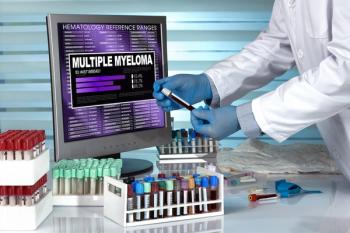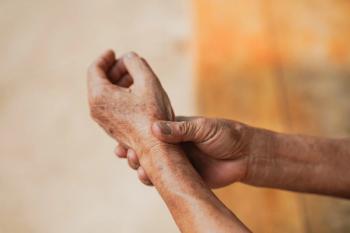
Burnout in Hematology Reaches Critical Levels Amid Emotional Strain, Long Hours: Adela Perolla, MD, PhD
Burnout is rising sharply in hematology due to emotional strain, long hours, and high patient demands, according to Adela Perolla, MD, PhD, impacting both physician well-being and patient care.
In an interview with The American Journal of Managed Care® at this year's
She expanded on this topic today in her presentation, "The Epidemic of Burnout in Hematology" during the YoungEHA session, "The Emotional Burden of Hematology: Navigating the Psychological Impact of Hematologic Practice and Research." Perolla also contributed as an investigator to the
This transcript was lightly edited; captions were auto-generated.
Transcript
How would you describe the current state of burnout in hematology? What makes this specialty particularly vulnerable?
Studies show that burnout is rising up, not only in hematology but also in oncology and the other fields. [To tell] the truth, in hematology, our study, ["Burnout Symptoms Among Hematology Professionals: An EHA Survey,"], that we started last year in 2024, has resulted [in] about 50% of hematologists [suffering] a higher grade or higher level of burnout.
Clearly, [the] explanation on that [is] because we are working all the time with patients that are suffering from [living death] diseases. Also, we have this compassion syndrome toward them, because we are working with hard cases, with people facing death; we're [always] telling bad news to them and also to their relatives. This makes our work really, really hard.
Another thing I have to focus [on] is that we work long hours, and we stay at the bedside of the patient because there are some moments that they need us. This is not only 1 day; this is day after day, hour after hour, and we just forget to go home sometimes.
What are the main drivers of burnout among hematologists?
The main drivers of burnout among the hematologists, studies show, are being female, having longer working hours, and being [a] younger professional [with] less than 5 years of [practicing] hematology. Also, if you are [lower than] the PhD degree—if you are not involved in academic levels. The lower the level of academics, the higher the burnout.
How is burnout impacting the workforce, particularly regarding retention, recruitment, and patient care quality?
When doctors get burnout, this impacts not only our lives, the lives of physicians by itself, but it [also] impacts the patients. We are just exhausted emotionally. We have low performance at work. We just can't do the things we want to do, and the patients get neglected.
As a hematologist, [and] all my colleagues, have a lot of patients going to them. Sometimes, you just don't have enough time to be with them, to speak with them, and you are so exhausted that you sometimes can make errors treating the patient. This is the main problem if we are getting burnt out. This is the focus: we have to fight the burnout or to prevent people, doctors, [from getting] burnout.
Newsletter
Stay ahead of policy, cost, and value—subscribe to AJMC for expert insights at the intersection of clinical care and health economics.













































